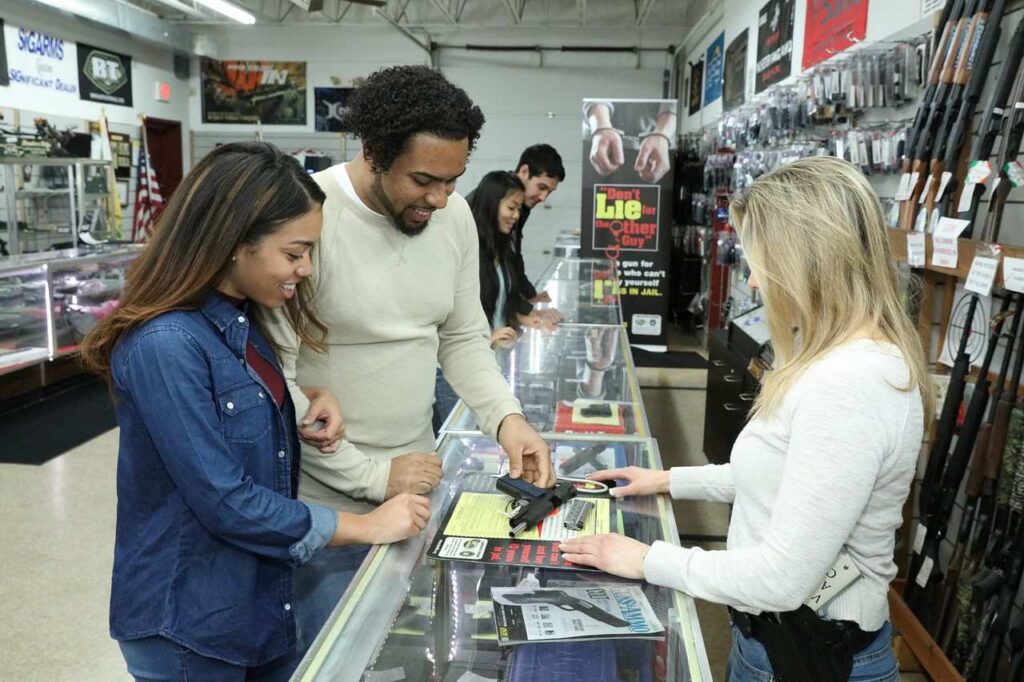There is a strange paradox of making a sale. Whether you want to sell more guns, knives or hunting boots, the key is to limit the buyer’s options. If you think I’ve gone crazy, read just one more line. Then let me explain.
Two items is a choice. Three items cause confusion.

Photo Credit NSSF
The way I heard the story several years ago was that a West Coast shoe salesman figured out an easy way to increase sales, especially with buyers who were having trouble making a decision on which shoes to buy. When the customer asked to see a pair of shoes, the salesman would, of course, bring them out. If the customer asked for a second pair, the salesman would dutifully retrieve the second pair to let the customer compare. But when the customer asked for a third pair, the salesman would always say, “Which of these would you like me to take away?”
It worked. The salesman reportedly increased his sales by nearly 40 percent. More importantly, his anecdotal observations spawned real scientific research on the psychology of buyers and the trouble they have making a decision when confronted with too many different options.
This is not to say that you should have a small inventory. On the contrary, you should have a wide enough selection to make sure your customers can handle and consider products with all the features they think are important. So let’s just say your buyer wants a small to mid-sized polymer-framed pistol, chambered in 9mm, with a magazine that holds at least 10 rounds and does not include a manual safety. I’m guessing you can name half a dozen such pistols with ease. But if you present all six at one time, not only are you making it more difficult to keep track of guns you’ve taken out of the case, you are likely to cause what researchers call “choice overload” and end up with the customer walking out to “think it over.” And that customer might just choose another shop and buy a gun from a salesperson who knows this trick.

Photo Credit NSSF
In a widely read study, professors Sheena Iyengar and Mark Lepper tested multiple groups and found out that more choices actually overwhelmed the participants and reduced the number of purchases. More studies from more professors followed, all pointing to the same thing: offering too many choices reduced the rate of sales. In some cases offering just two options at a time resulted in an 83 percent sale rate. Would you like to make a sale 83 percent of the time you showed someone a gun?
The first step is to find out what the customer is looking for. So ask good questions and have enough inventory to provide some variety. Once you have learned from the customer what he or she is looking for in a pistol, bring out two options with all the features the buyer has asked for. This demonstrates that you have listened to the buyer and you have the knowledge and expertise to help with the decision. As you guide the buyer through the features, focus on the three that are most important. For the sake of this story, we’ll say that magazine capacity, overall weight and price point are the three factors the buyer seems interested in. The “rule of three” when it comes to communication, tells us to present our information in three parts because that seems to be the most impactful and memorable for the human mind. People really can only remember about three pieces of information in their short-term working memory. If they get too much information, they often won’t remember a thing and can become frustrated or even angry. That’s not what you want as you are trying to the sale.
If the buyer can’t or won’t choose one of the guns you’ve presented and asks for a third option, simply say, “Which of these two would you like me to put away?”
This allows the buyer to dismiss one gun completely and focus only on the choice between the two pistols now on the counter. It makes the choice easier and increases your chances for a sale.
Scientists call it “choice overload.” By reducing the number of choices you offer a customer you improve the odds of making a sale. It might sound counter-intuitive, that’s how the human mind is wired. Most of us want simplicity and fewer choices. Don’t overload your customer’s ability to make a choice.